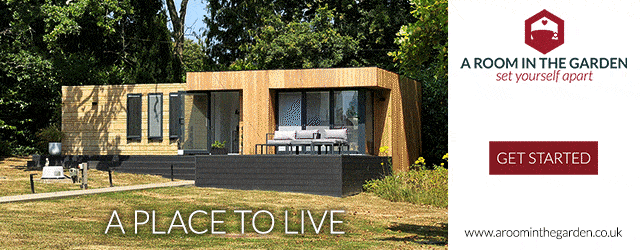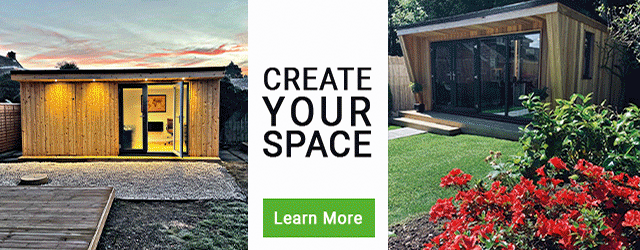The weather in the UK has been extreme over the last few weeks, and it has taken its toll on many buildings. Watching images of roofs peeling off houses, and garden sheds overturned, it has made us think about the elements of quality garden room design that allows them to stand up to the weather.
All sorts of different buildings are marketed as garden rooms and offices, from glorified shed structures to buildings built using the same materials and principles as modern house building, and they will stand up to the extremes of weather in different ways.
Elements you should look for in a garden room / office that will stand up to extreme weather
A suitable foundation
The foundation is the basis of a good garden room, and should be chosen and designed for the individual site circumstances. A good foundation will be designed so that it sits on solid ground, not just the top soil, and spaced so the load is evenly distributed – this is even more important with the weather we have had recently, there has been so much rain that the ground is saturated with water, which could unsettle an unsuitable garden room foundation.
It can be argued that garden rooms with a foundation system that creates a suspended floor, come into their own in this weather, as the structure of the building is elevated from the sodden ground.
A solid framework
It may seem obvious that a garden room needs a sound framework to withstand bad weather, but the quality of garden room frames vary considerably throughout the market, some garden rooms are built with small dimension timbers, spaced far apart, with no structural board to stabilise the frames, these frames are liable to twist in heavy winds creating movement in your building, which can effect wall linings, doors etc. Other garden rooms are built with much thicker timbers, sited close together and strengthened with layers of board, so are much less likely to ‘rack’ in the wind.
Durable cladding
The exterior cladding will take the majority of the impact from bad weather, it is essential that its well fixed to the wall, to avoid sections becoming loose in the high winds. The cladding will also become heavy with moisture so again it is wise to check that the cladding is fixed at close intervals.
You want to avoid moisture entering the garden room structure, the cladding will become wet with all this rain, but some suppliers coat their cladding with paints and seals which repel the water from the wood, this not only stops the inward movement of moisture, but protects the cladding in the longterm from rot. Other suppliers use timbers such as cedar which are naturally durable, but they will still become wet in heavy rain like we are experiencing.
Some suppliers fix their cladding to timber battens on the outside of the wall, this creates a air space between the cladding and the structure of the garden room, which is useful as, as the cladding becomes wet the moisture will run down the back of the cladding, and drip out at the bottom, rather than penetrate into the structure of the building.
Breather membrane
The breather membrane, wrapped around the outside of the garden room, beneath the cladding is very important, but paticuarly in bad weather, as it acts as a barrier stopping the ingress of moisture which could otherwise be wind driven into the main structure. Whilst preventing moisture entering the building, a breather membrane still allows moisture from within the building to escape – rather like a pair of lungs.
A sound roof
The most vulnerable style of roof covering in the high winds is the tiled roof, where the bottom of the tile lifts in the wind, breaks its fixing and becomes loose – this needs to be sorted quickly as water can soon start trickling into the structure of the building. Having said that popular tiling systems on garden rooms such as cedar shingles have around three layers of tile at any point on the roof, and whilst you need to get the shingle replaced, the layers below will still offer protection. Asphalt shingles are also popular, and these are not only nailed in position but also glued down – your supplier will apply a heat gun to a bitumen seal, which fixes one tile to the one below, this helps prevent the wind getting under the tile.
Guttering
Not all garden rooms come with a guttering system as standard, but its certainly a good feature to have, as the amount of water that runs off a garden room roof is quite amazing – we have two large water butts here at Garden Room HQ, and will have to add more to cope with the rain thats running off the roof at them moment.
Water butts are a good idea, because you can then use the water collected in your garden, but many suppliers will run a rain water system into a soak away, situated away from the garden room, which works in the same way as the guttering on your house. Its not good practice just to have a shoe at the end of the gutter which directs the water onto the ground around the garden room, because the ground will quickly become sodden in weather like this!
If you consider these aspects when choosing and specifying your garden room or office, you will have a sturdy building that will serve you well – even in the most extreme weather!










